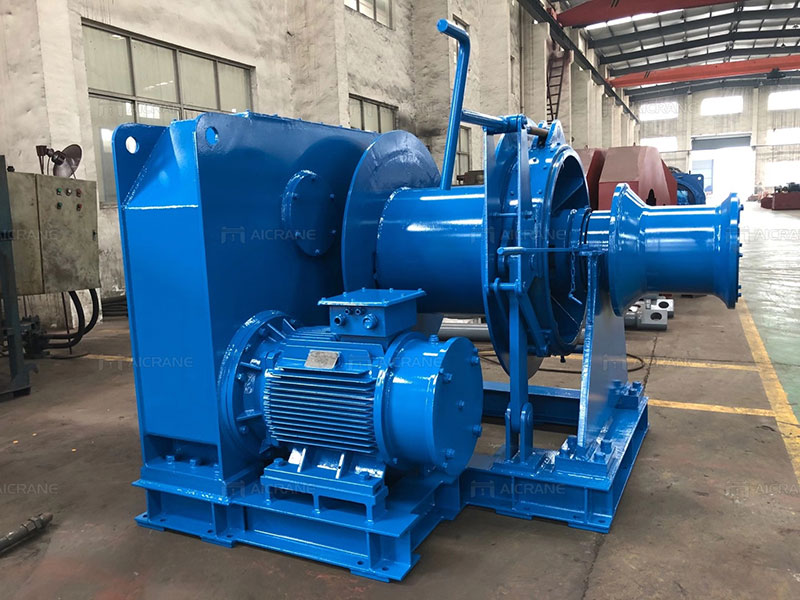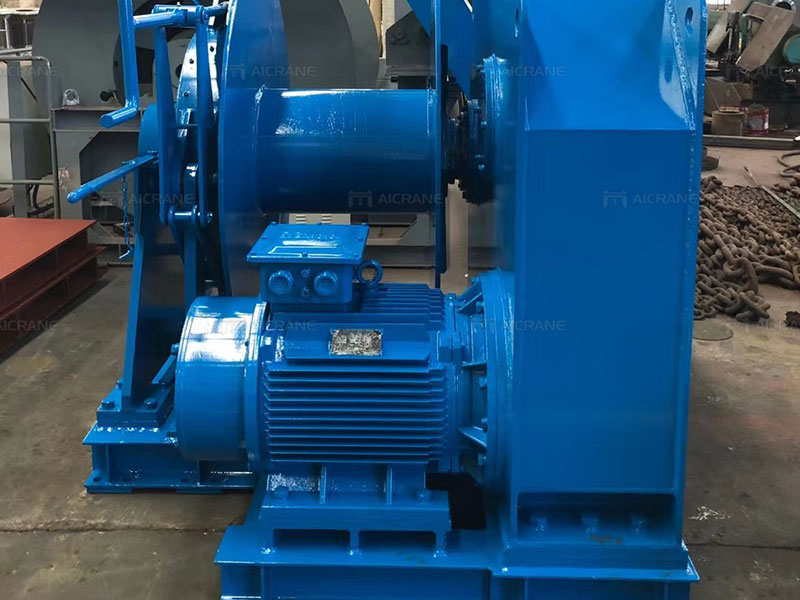Marine electric winches are indispensable tools onboard ships and vessels, used for a wide range of tasks such as mooring, anchoring, cargo handling, and towing. These powerful machines simplify the otherwise labor-intensive processes, making them essential for efficient maritime operations. To better understand their workings, let’s delve into the basic components and functions of marine electric winches.
Electric Motor
The electric motor is the heart of an electric marine winch. It is responsible for converting electrical energy into mechanical power to drive the winching mechanism. The motor’s power rating is critical as it determines the maximum load capacity and pulling force of the winch. In marine applications, electric motors are preferred due to their reliability, ease of control, and relatively low maintenance requirements.

Gearbox
The gearbox plays a crucial role in marine electric winches by increasing the torque generated by the electric motor while reducing the output speed. This gearing arrangement allows the winch to exert substantial force, enabling it to handle heavy loads efficiently. The selection of an appropriate gearbox depends on the winch’s intended use and the desired pulling capacity.
Drum or Spool
The drum, also known as the spool, is a cylindrical component around which the wire rope or cable is wound. It is connected to the winch’s shaft and rotates as the winch operates. The size and design of the drum are determined by the intended application and the length and diameter of the rope or cable to be used. A larger drum diameter allows for more rope storage and reduces wear on the wire rope.
Wire Rope or Cable
The wire rope or cable is an integral part of the electric winch machine, serving as the primary means to handle loads. It is wound around the drum, and as the drum rotates, it either retracts or extends the wire rope, depending on the winching operation. The choice of the wire rope material and size depends on factors such as the winch’s capacity, environmental conditions, and the type of loads it will handle.
Braking System
Safety is of utmost importance in marine operations, and the braking system is a critical component of a marine electric winch. The braking system is designed to hold the load securely in position when the winch is not actively operating. There are different types of braking systems used in marine winches, including mechanical brakes, hydraulic brakes, and electric brakes. These systems provide precise control over the winching process and prevent unexpected load movements.

Control System
The control system of a marine electric winch allows the operator to manage the winching operations effectively. It includes various controls, such as start/stop buttons, direction switches, and speed control. In modern winches, sophisticated electronic control systems enable precise and smooth operation, making it easier to handle delicate or valuable cargoes safely.
Load Sensing and Limiting Devices
To prevent overloading and ensure safe operations, many marine electric winches are equipped with load sensing and limiting devices. These devices monitor the tension on the wire rope and automatically cut off the power or trigger an alarm when the load exceeds the winch’s safe working capacity.
Frame and Mounting
The frame provides the structural support and housing for all the winch components. It is designed to withstand the marine environment’s harsh conditions, such as saltwater exposure and vibrations during operation. Proper mounting of the marine winch ensures stability and minimizes stress on the vessel’s structure.
Conclusion
Marine electric winches are essential tools that enhance the efficiency and safety of maritime operations. Understanding the basic components and functions of these winches provides valuable insights into their capabilities and applications. By selecting the right type of marine electric winch based on load requirements, environmental conditions, and operational needs, ship operators can optimize their vessel’s performance and ensure the smooth handling of various tasks at sea.